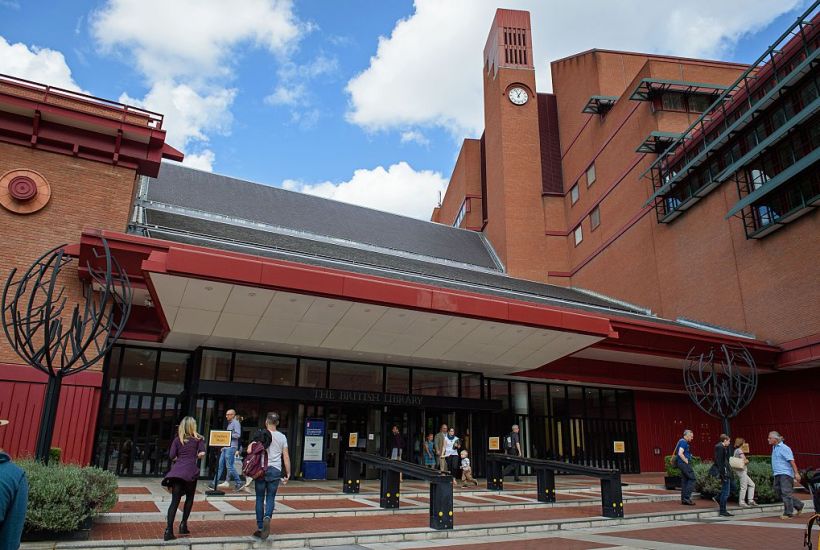Architects are taught during training of the ‘looks like’ trap: just because a building resembles another building – or indeed something else entirely – it is not proof that was the intention. Yet critics of the British Library – who claim the building resembles a ‘battleship’, the ‘greatest symbol of British imperialism’ – appear to be making just this mistake.
In a report by the Decolonising Working Group, which is part of the BAME network at the library, the ‘resemblance’ is enough to condemn it. But even if the building does look like a battleship, can it really be seen as an image of imperialism, given the inconvenient fact that battleships – or at least the most familiar type of them, dreadnoughts – did not appear until the early 20th century, when British hegemony had been undermined by Germany, the United States and Japan?
Apparently the claim rests on the presence of round windows, which look, to some, like portholes. Another piece of ‘evidence’ is that the architect, Professor Sir Colin St John Wilson RA (1922-2007), spent a few years of war service in the navy. This, it seems, is enough not just to support the slur on him but to dismiss the building, the institution it houses, and the entire history of its collecting policies.
If these critics knew anything whatsoever about architecture they might realise a far stronger resemblance between the British Library and various late civic projects by the great Finnish architect Alvar Aalto. Aalto was a hero to Professor Wilson, who wrote in an informed and perceptive way about him, as well as serving as a trustee of a charity devoted to preserving one of his greatest buildings, the Viipuri Library in the now Russian (though briefly Finnish (1917-44)) city of Viborg on the Gulf of St Petersburg. Such information is hardly difficult to find; it even appears in Wilson’s Wikipedia entry.
The same source hints at his family background. As an admiring son of Henry Wilson – the so called ‘red bishop’ because of his support for the Republicans in the Spanish Civil War, which for the avoidance of doubt have little or nothing to do with present day American Republicans – Professor Wilson is an unlikely candidate for spouting imperialistic or warmongering views. Such an allegation at least begs stronger supporting evidence than round windows in one of his buildings.
These critics should also consider Professor Wilson’s cultural hinterland and his contribution to the commonwealth, including the superb art collection of largely contemporary British art he built up over more than 60 years, much of which is now in Chichester’s Pallant House Gallery.
Of course, it is perfectly possible to take a critical stance about the way the British Library looks. Some think that the building inflates, perhaps to the point of Gargantuanism, the delicate compositional principles Aalto used. But dismissing the British Library building and its priceless collection because it looks like an imperial symbol is ridiculous and unfair.
The British Library’s staff have every right to examine the history and policies of the institution. But to do so without understanding the context of how and why the collection came about, and its incalculable value, is to undermine their purpose.
Even if the building is what its critics claim, and there are racist symbols contained in its collection, surely the best atonement would be to use the building as a centre for scholarship to bring about a new understanding of the rights and wrongs of the past.
If library staff really want to ‘decolonise’ the British Library, they should start by looking at the evidence. Wilson never assumed that because something ‘looks like’ something else, it ineluctably is what it may resemble, unlike the British Library’s critics. He was, in any case, much more concerned about how the building worked, as evidenced in decades of designing libraries including the St Cross Building for Oxford University.
Wilson liked citing the comment by another of his heroes, the philosopher Ludwig Wittgenstein, ‘whereof one cannot speak, thereof one must be silent’. Unless the staff of the library are prepared to engage more seriously with its architecture, rather than superficial sloganising, they would do well to heed that advice.
Got something to add? Join the discussion and comment below.
Get 10 issues for just $10
Subscribe to The Spectator Australia today for the next 10 magazine issues, plus full online access, for just $10.
Jeremy Melvin is visiting professor at the Bartlett School of Architecture, UCL, and formerly consultant curator for architecture at the Royal Academy




















Comments
Don't miss out
Join the conversation with other Spectator Australia readers. Subscribe to leave a comment.
SUBSCRIBEAlready a subscriber? Log in